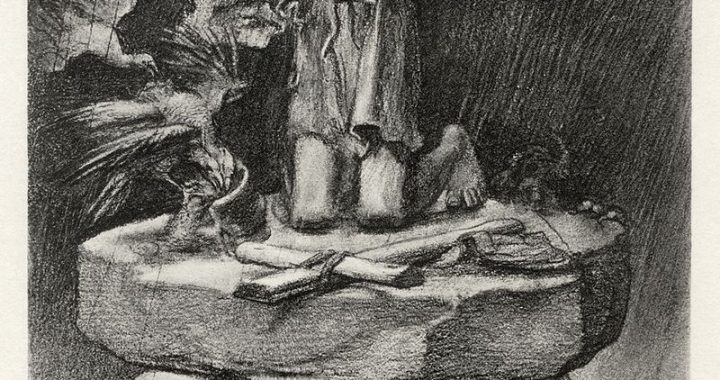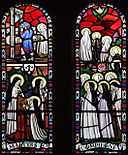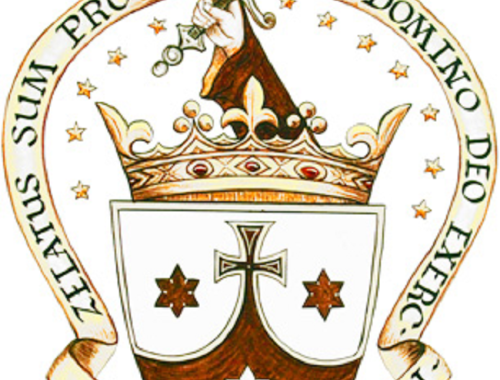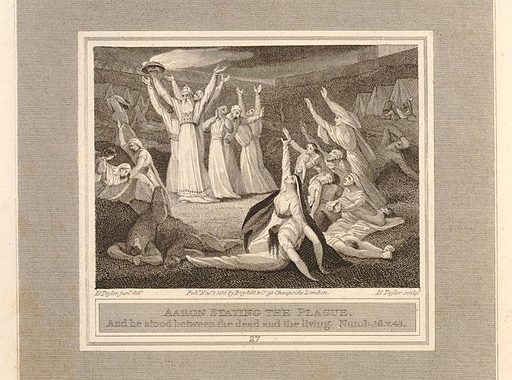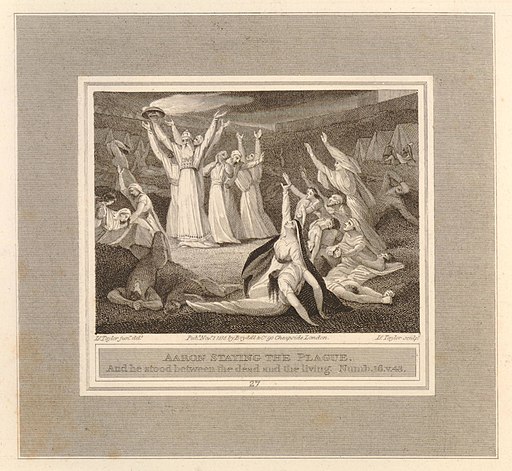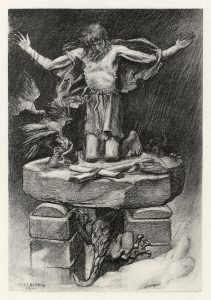
As explained in a previous post, not all Catholic saints enjoyed peaceful, quiet lives. Several male saints commemorated in July also had life stories that would make them great subjects for the movies.
Saint Simeon Salus would seem a poor choice on the surface for a visual media like film because he spent almost thirty years living as a monk in the Sinai Desert in Egypt in the sixth century. It would be hard to turn that experience into an action picture. (Note that many Christian men and women had begun to live in the desert in the sixth century because of the inspirational example of Saint Anthony the Great. Anthony was not the first Christian hermit in the desert, but he was certainly the most famous.) But after decades of silent, penitential living, Simeon recognized that God was calling him to return to his native country of Syria and serve the needy. So he did. However, to avoid being treated as a living saint in the town, he humbly pretended to be very unintelligent. He was so successful that the people gave him the nickname “Salus”, which means “stupid”. One can imagine many humorous incidents occurred in Simeon’s life until his neighbors realized he was saintly, not stupid. He is commemorated by the Church on July 21.
Unlike Saint Simeon Salus, the biography of Saint Simeon the Stylite wouldn’t work as a comedy. This Simeon also lived a penitential life as a monk—in fifth century Turkey—but the penances he imposed upon himself were not funny or easy. He chose increasingly difficult places in which to live: first a hut, then a cave, and then on top of a small pillar. He also prayed for hours in difficult postures. This would seem flamboyant, rather than simple, if it wasn’t for the fact that he did all this in the middle of nowhere, and we only know about his penances because of the crowds who came to see him and to listen to him speak about God. All these penances, after all, were performed as an atonement for his own sins and those of others. That is, Simeon detached himself not only from sin but even from ordinary pleasures so that he could live entirely for God. And, one hopes, the people who came to see him went home resolved to let go of their own attachments to sinful pleasures too. His feast day is July 27.
If someone made a children’s movie about the Seven Sleepers of Ephesus (also commemorated on July 27), it would sound like this: seven Christian men were walled up inside a cave during the days of the Roman empire, to execute them for their faithfulness to Christ. Two hundred years later, the cave was accidentally discovered and reopened, and the seven men miraculously woke up, Rip van Winkle style, from their long sleep.
A more realistic movie about these saints would follow the older tradition—rather than the later legend just described—that the seven men were martyred around the year 250 because they refused to renounce Christ and were buried in a cave near the city of Ephesus (modern Turkey). When their tomb was rediscovered in the year 479, inscriptions on the cave explained that they were martyrs. It appears that the inscription in the cave referred to the seven men as “sleeping in the Lord”, a not uncommon New Testament expression (for example, see Acts 7:60, 1 Cor. 15:6, 1 Thes. 4:13, 2 Pet. 3:4) to describe Christians who have died peaceful deaths. This may have led to the fanciful legend about their two-hundred-year-long sleep.
But only a believer could make a film about the life of Saint Sharbel Makhlouf (1828-1898), who is remembered by the Church on July 24. He was devout from an early age; his favorite book when he was a young man was The Imitation of Christ. (It is a spiritual classic; look it up.) Sharbel lived as a monk and then as a hermit, with only the barest necessities. But his profound love for God somehow attracted people to him even in his solitary life. He was so deeply devoted to our Lord’s Presence in the Blessed Sacrament that he spent hours preparing before he celebrated each Mass. When he prayed, people sometimes saw him levitating above the ground. He suffered from paralysis at the end of his life, but he accepted his painful condition with great peace. Death has not slowed him down either. Blood has been found to flow from his incorrupt body on multiple occasions, and he is greatly loved by the Lebanese people for the miraculous healings that have occurred through his intercession.
Ultimately, none of these holy men would care about being featured in a movie—unless that movie helped its audience learn how to seek humility, self-discipline, courage, and a love for prayer for the sake of the God who loves us so much.
